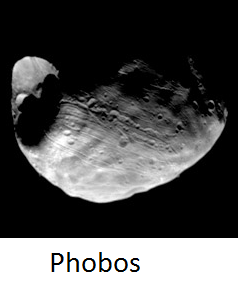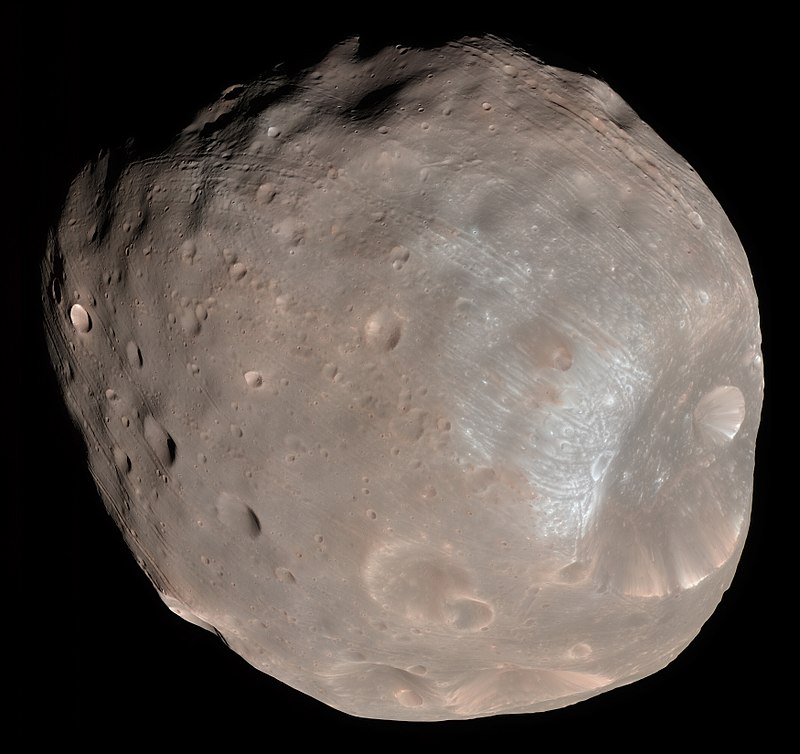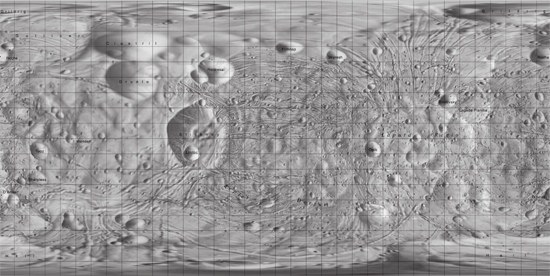It looks like you're using an Ad Blocker.
Please white-list or disable AboveTopSecret.com in your ad-blocking tool.
Thank you.
Some features of ATS will be disabled while you continue to use an ad-blocker.
share:
originally posted by: dragonridr
a reply to: JimOberg
Looks like dice,who said god doesn't play dice with the universe?
Einstein says no, Hawking says yes.
What's a poor astrophysicist to believe?
edit on 6/20/2018 by Riffrafter because: (no reason given)
The crater suggests an impact. Perhaps this object, Ryugu, is a loosely packed aggregate similar to a pile of gravel and dirt in which a slow impact might make this crater yet it is not the only small body with a rather large crater on its surface. It seems that just about all images of small moons, asteroids and comet nuclei have large craters. They shouldn't be there yet I have come to expect to see them in close up images.
originally posted by: Blue Shift
originally posted by: Devino
a reply to: JimOberg
I find it odd that many small moons and asteroids have such relatively large craters. It would seem logical that an impact of that size would break the asteroid apart.
Ryugu has a diameter of about 900 metres, consistent with predictions. Ryugu has a pronounced equatorial bulge (a feature seen in many asteroids) as well as crater-like features up to 200 metres across.
Maybe they're not so much an "impact," as a "bump," with both objects flying off each other without massive damage to either.
You remind me of my childhood. I poked everything with a stick first...
originally posted by: Devino
a reply to: JimOberg
I find it odd that many small moons and asteroids have such relatively large craters. It would seem logical that an impact of that size would break the asteroid apart.
Ryugu has a diameter of about 900 metres, consistent with predictions. Ryugu has a pronounced equatorial bulge (a feature seen in many asteroids) as well as crater-like features up to 200 metres across.
The most extreme example is probably Saturn's famous "Death Star" moon, Mimas. It's hard to imagine how it could have sustained such a large impact without totally shattering.
I would think it very unlikely yet it could be. However this is not a rare feature on small bodies floating around in our solar system, it is rather quite common.
originally posted by: prevenge
originally posted by: Devino
a reply to: JimOberg
I find it odd that many small moons and asteroids have such relatively large craters. It would seem logical that an impact of that size would break the asteroid apart.
Ryugu has a diameter of about 900 metres, consistent with predictions. Ryugu has a pronounced equatorial bulge (a feature seen in many asteroids) as well as crater-like features up to 200 metres across.
How do you know that's not what happened, and this one is the chunk that broke off?
How many close up images of objects like these are there of craters on their surface, relatively large craters on small bodies? The Moons Mimas and Phobos come to mind.
DexterRiley has posted a nice image of Phobos;

If you look closely there are rilles, with crater chains inside, that go all the way around to the other end of the Moon that appear to terminate at two opposing poles. They kind of resemble magnetic field lines.
What was thought to be known about crater impacts does not fit with what has been observed. So perhaps small bodies can sustain high energy impacts and stay mostly intact or perhaps there is another mechanism that creates these craters that does not require high energy impact. Either way the answer seems to be that we do not know.
That is just what I was thinking, as you can see in my post below yours. Mars' moon Phobos is also a very interesting example. Not only does it have a relatively huge crater, perhaps too large for such a small body, but it is also full of crater chains. I wish I had more time to post images. Crater chains are hard to explain using impact theory, extremely unlikely scenario, especially when these chains follow rills that then seem to behave like magnetic field lines.
originally posted by: AndyFromMichigan
originally posted by: Devino
a reply to: JimOberg
I find it odd that many small moons and asteroids have such relatively large craters. It would seem logical that an impact of that size would break the asteroid apart.
Ryugu has a diameter of about 900 metres, consistent with predictions. Ryugu has a pronounced equatorial bulge (a feature seen in many asteroids) as well as crater-like features up to 200 metres across.
The most extreme example is probably Saturn's famous "Death Star" moon, Mimas. It's hard to imagine how it could have sustained such a large impact without totally shattering.
I second the request for an explanation as to why the image is 2004-era vodafone 0.6 megapixel camera quality, when the Japanese lead the world in
camera-optics-electronic-gizmos...
Why have they provided such a crappy photo? Indeed, why have they even bothered to send a probe into space if my Sony Xperia smartphone's camera apparatus is better equipped for the task (proportionately speaking, in terms of scaled-up fit-for-purpose standards), being as it is the best on the terra-firma smartphone market?
Strikes me as suspicious.
Best smartphone cameras --- Worst space probe cameras = ???
Something doesn't add up. Like when the viewing public was provided with footage 'filmed-off-a-screen-at-mission-control' of the Moon landing. Deliberately degraded imagery...
Why have they provided such a crappy photo? Indeed, why have they even bothered to send a probe into space if my Sony Xperia smartphone's camera apparatus is better equipped for the task (proportionately speaking, in terms of scaled-up fit-for-purpose standards), being as it is the best on the terra-firma smartphone market?
Strikes me as suspicious.
Best smartphone cameras --- Worst space probe cameras = ???
Something doesn't add up. Like when the viewing public was provided with footage 'filmed-off-a-screen-at-mission-control' of the Moon landing. Deliberately degraded imagery...
originally posted by: Devino
a reply to: JimOberg
I find it odd that many small moons and asteroids have such relatively large craters. It would seem logical that an impact of that size would break the asteroid apart.
Ryugu has a diameter of about 900 metres, consistent with predictions. Ryugu has a pronounced equatorial bulge (a feature seen in many asteroids) as well as crater-like features up to 200 metres across.
The impact causes temperature to rise so much that the materials of both objects vaporize. At 6000C, even tungsten carbide will melt and vaporize.
a reply to: FlyInTheOintment
The mission is not to take pictures. The mission is to return samples. Space and weight are a premium on any spacecraft and the mission determines the instrumentation. The actual function of the optical camera is navigation, not tourism. But the pictures will improve when the telescopic unit is for mapping the asteroid in preparation for the landings.
global.jaxa.jp...
The mission is not to take pictures. The mission is to return samples. Space and weight are a premium on any spacecraft and the mission determines the instrumentation. The actual function of the optical camera is navigation, not tourism. But the pictures will improve when the telescopic unit is for mapping the asteroid in preparation for the landings.
global.jaxa.jp...
edit on 6/20/2018 by Phage because: (no reason given)
No? Me neither. It doesn't stop me from trying to understand though.
originally posted by: Blue Shift
originally posted by: Devino
The crater suggests an impact.
I'm no craterologist.
From what I have read we currently we have two known mechanisms for the creation of craters, volcanoes and impacts (not to mention collapsed lava tubes, Cenotes and sink holes). When dealing with small astronomical bodies such as these we can rule out volcanoes, and the rest for the most part, leaving impacts as the only accepted cause. There seems to be be a problem with this.
Phobos is a perfect example of this problem and one I have tried to find an answer to. Assuming that this small, 7 mile radius (17 mile long), moon could withstand such a huge impact that made the Stickney crater, 5.6 mile radius, what caused the rilles and crater chains that seem to emanate from this crater and terminate on the other side?
Here is a nice image of these chains on Phobos;

And this one in 2D from Sky and Telescope Which attribute the rilles and crater chains to fracturing from tidal forces;

And this from a paper at Science Direct that suggests they are due to secondary impacts and rolling debris in a low gravity environment.

a reply to: Phage
Also considering that this is a picture of an object that is 900 meters wide at a distance of over 155 miles I would say well done from such a small craft. I am eagerly awaiting an analysis of samples returned from this rock.
Also considering that this is a picture of an object that is 900 meters wide at a distance of over 155 miles I would say well done from such a small craft. I am eagerly awaiting an analysis of samples returned from this rock.
edit on 6/20/2018 by Devino because: (no reason given)
originally posted by: Phage
a reply to: FlyInTheOintment
The mission is not to take pictures. The mission is to return samples. Space and weight are a premium on any spacecraft and the mission determines the instrumentation. The actual function of the optical camera is navigation, not tourism. But the pictures will improve when the telescopic unit is for mapping the asteroid in preparation for the landings.
global.jaxa.jp...
The Real mission is not to show the Borg walking around on the surface!
a reply to: Devino
Since there are striations which overlay the crater, it's not likely they are related. At least some of the grooves had have to have occurred after the impact.
One of the most highly regarded theories (which you reject?) has to do with tidal stresses. Phobos, in a death spiral toward Mars, is beginning to approach its Roche limit. Just because someone thinks something looks like something else doesn't mean it is. No magnetism involved. No electric universe. Just gravity.
She canna take eny more c'pn. She's breakin up!
agupubs.onlinelibrary.wiley.com...
Oh, and apart from how unlikely you may think it is, models show that an impact origin for the crater is entirely possible.
Since there are striations which overlay the crater, it's not likely they are related. At least some of the grooves had have to have occurred after the impact.
One of the most highly regarded theories (which you reject?) has to do with tidal stresses. Phobos, in a death spiral toward Mars, is beginning to approach its Roche limit. Just because someone thinks something looks like something else doesn't mean it is. No magnetism involved. No electric universe. Just gravity.
She canna take eny more c'pn. She's breakin up!
agupubs.onlinelibrary.wiley.com...
Oh, and apart from how unlikely you may think it is, models show that an impact origin for the crater is entirely possible.
edit on 6/20/2018 by Phage because: (no reason given)
The reason for its shape has a lot to do with the fact that it's too small for its gravity to form it into a sphere. It also has an equatorial bulge,
caused by material slipping due to centrifugal forces from it's spinning.
Phil Plait has a good write-up on this asteroid and the images: www.syfy.com...
The cool thing about the images is that you can use cross-eye method to see them in stereo:

The asteroid rotates backwards, so that big impact crater might have had a big impact (pun intended) after all.
Phil Plait has a good write-up on this asteroid and the images: www.syfy.com...
The cool thing about the images is that you can use cross-eye method to see them in stereo:

The asteroid rotates backwards, so that big impact crater might have had a big impact (pun intended) after all.
edit on 21-6-2018 by wildespace
because: (no reason given)
new topics
-
Sunak spinning the sickness figures
Other Current Events: 25 minutes ago -
Nearly 70% Of Americans Want Talks To End War In Ukraine
Political Issues: 36 minutes ago -
Late Night with the Devil - a really good unusual modern horror film.
Movies: 2 hours ago -
Cats Used as Live Bait to Train Ferocious Pitbulls in Illegal NYC Dogfighting
Social Issues and Civil Unrest: 3 hours ago -
The Good News According to Jesus - Episode 1
Religion, Faith, And Theology: 5 hours ago -
HORRIBLE !! Russian Soldier Drinking Own Urine To Survive In Battle
World War Three: 7 hours ago -
Bobiverse
Fantasy & Science Fiction: 10 hours ago -
Florida man's trip overseas ends in shock over $143,000 T-Mobile phone bill
Social Issues and Civil Unrest: 10 hours ago
top topics
-
Florida man's trip overseas ends in shock over $143,000 T-Mobile phone bill
Social Issues and Civil Unrest: 10 hours ago, 8 flags -
SETI chief says US has no evidence for alien technology. 'And we never have'
Aliens and UFOs: 14 hours ago, 7 flags -
Cats Used as Live Bait to Train Ferocious Pitbulls in Illegal NYC Dogfighting
Social Issues and Civil Unrest: 3 hours ago, 7 flags -
This is our Story
General Entertainment: 17 hours ago, 4 flags -
Former Labour minister Frank Field dies aged 81
People: 12 hours ago, 4 flags -
Bobiverse
Fantasy & Science Fiction: 10 hours ago, 3 flags -
Late Night with the Devil - a really good unusual modern horror film.
Movies: 2 hours ago, 2 flags -
HORRIBLE !! Russian Soldier Drinking Own Urine To Survive In Battle
World War Three: 7 hours ago, 2 flags -
The Good News According to Jesus - Episode 1
Religion, Faith, And Theology: 5 hours ago, 0 flags -
Nearly 70% Of Americans Want Talks To End War In Ukraine
Political Issues: 36 minutes ago, 0 flags
active topics
-
Nearly 70% Of Americans Want Talks To End War In Ukraine
Political Issues • 3 • : Irishhaf -
President BIDEN Vows to Make Americans Pay More Federal Taxes in 2025 - Political Suicide.
2024 Elections • 113 • : Zanti Misfit -
How ageing is" immune deficiency"
Medical Issues & Conspiracies • 30 • : annonentity -
Remember These Attacks When President Trump 2.0 Retribution-Justice Commences.
2024 Elections • 55 • : Zanti Misfit -
SETI chief says US has no evidence for alien technology. 'And we never have'
Aliens and UFOs • 36 • : anthelion -
Breaking Baltimore, ship brings down bridge, mass casualties
Other Current Events • 481 • : firerescue -
Truth Social goes public, be careful not to lose your money
Mainstream News • 124 • : lilzazz -
British TV Presenter Refuses To Use Guest's Preferred Pronouns
Education and Media • 145 • : Annee -
Sunak spinning the sickness figures
Other Current Events • 0 • : annonentity -
Cats Used as Live Bait to Train Ferocious Pitbulls in Illegal NYC Dogfighting
Social Issues and Civil Unrest • 9 • : ImagoDei

